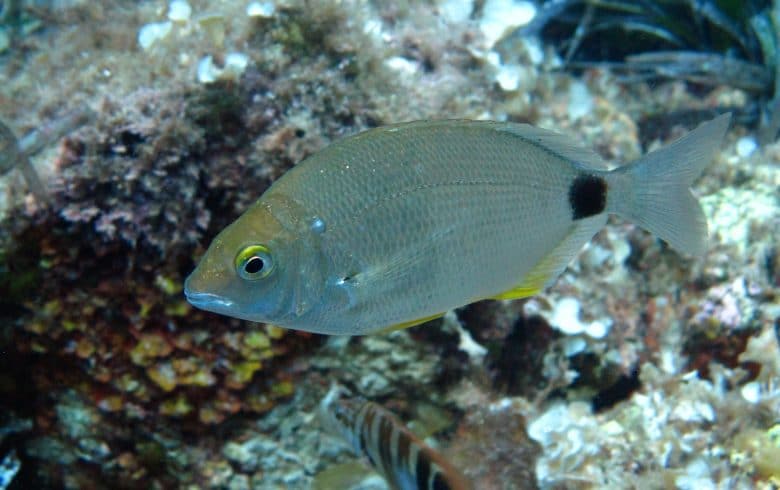
Did you know ?
Generally males and females are separate individuals but there are some protoandric hermaphrodites (i.e. who start as males).
Measuring no more than 20cm, the annular seabream is the smallest of the Mediterranean seabream species. It is easy to recognise from its silvery-gold colour, the single black ring at the base of its caudal fin and its yellow pelvic fins. It lives in schools, feeding on small worms, molluscs, crustaceans and echinoderms. They prefer Posidonia seagrass down to 90m deep and are less frequently seen on rocky and sandy bottoms. They are found all over the Mediterranean and Black Sea, and from the Bay of Biscay to Gibraltar in the Atlantic.
Phylum: Vertebrates
Class: Osteichthyes
Order: Perciformes
Family: Sparidae
Scientific name: Diplodus annularis
French: Sparaillon
Spanish: Rapallon anillado
Italian: Sarago sparaglione
German: Ringelbrasse






















